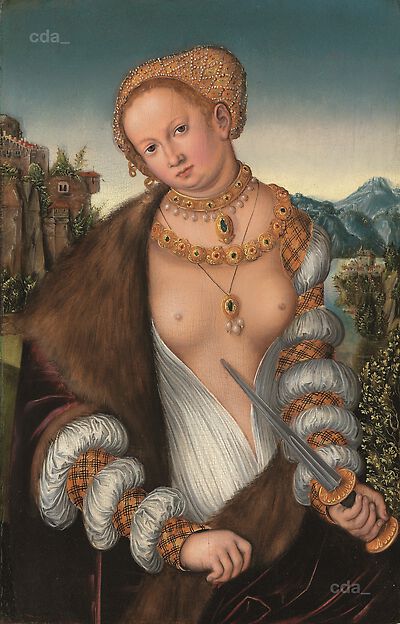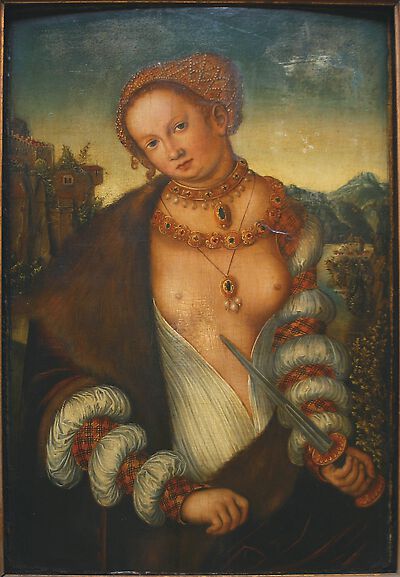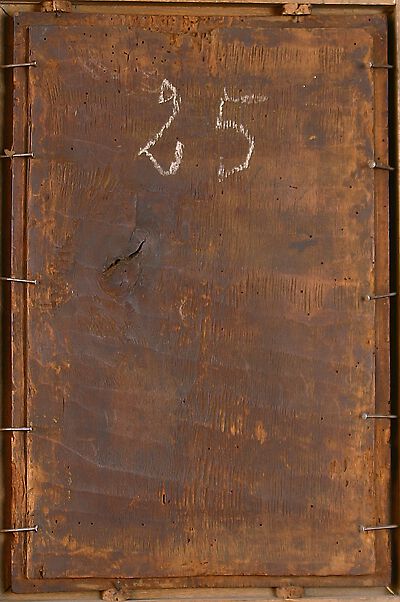The painting depicts Lucretia as a half-length figure in contemporary dress sitting in front of a landscape. Her face is inclined slightly to the left and her gaze is directed at the viewer. In her left hand she holds the dagger pointed towards her breast, and in her right hand
The painting depicts Lucretia as a half-length figure in contemporary dress sitting in front of a landscape. Her face is inclined slightly to the left and her gaze is directed at the viewer. In her left hand she holds the dagger pointed towards her breast, and in her right hand she has a fur-trimmed overcoat. This is draped over her right shoulder, falls then down her back and covers her lap. Underneath this she wears a contemporary garment with stepped white sleeves, which reveals her breasts. She wears a choker, which is richly decorated with pearls and precious stones, a necklace with precious stones and a leather band with a pendant. Lucretia's hair is pinned up underneath a bonnet decorated with pearls. A mountainous landscape with a river and castles is visible in the background.
[Herrschaft, cda 2011]
According to the legend Lucretia lived in the 6th century BC and was the beautiful and virtuous wife of the roman Collatinus. The roman King's son - Sextus Tarquinius fell in love with her. During a stay in her house Sextus threatened to kill her and shame her honour if she did not surrender to him. After the rape Lucretia had her father and husband vow vengeance and then she stabbed herself. The event led to an uprising in which the royal family was overthrown and the Roman Empire became a Republic.
Depictions of Lucretia who was seen as the epitomy of female virtue, chastity, fidelity and honour enjoyed great popularity, particularly in the 16th century.
[Literature: Bierende 2002, Follak 2002, Livius 1909]


